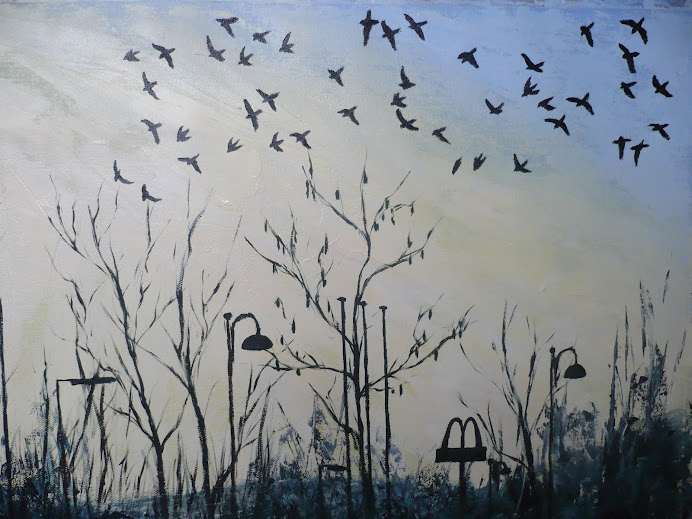 During a recent holiday at the beginning of October to Tenby in West Wales I was struck by a cliff at the back of our caravan which seemed so out of place next to the rows of neat white caravans. So I took it upon myself to make some studies of it and to see if it could be developed into a painting. This A3 oil pastel sketch from my sketchbook shows the composition I wanted to use along with a more expressive rendering of the colours and plant forms. I was thinking about Peter Prendergasts' work at the time and the strong use of black contrasting with the light tonal areas shows his influence.
During a recent holiday at the beginning of October to Tenby in West Wales I was struck by a cliff at the back of our caravan which seemed so out of place next to the rows of neat white caravans. So I took it upon myself to make some studies of it and to see if it could be developed into a painting. This A3 oil pastel sketch from my sketchbook shows the composition I wanted to use along with a more expressive rendering of the colours and plant forms. I was thinking about Peter Prendergasts' work at the time and the strong use of black contrasting with the light tonal areas shows his influence.I filled a few pages of my sketch book with compositional studies and once I'd decided on the right angle I painted this A2 study. It contains a more accurate rendering of the colours in the rocks face and shows detail for the cracks and fissures and plant life, but I was hoping I could bring out more texture in the finished painting. The oil pastel sketch above contains much more dynamic marks that I was hoping to bring out too, rather than the flat smooth brush marks.
After having experimented with using lumps of old acrylic paint scraped off old palettes in my John Piper style painting I decided to try the technique again for this painting. This photo shows the painting viewed from the side showing where I've placed the textured areas in the middle, corresponding with the rock face. The vivid colours that I've used for the under painting will hopefully feed through into the top layers which will be slightly more "realistic." I'm still hoping to work somewhat in the style of Peter Prendergast.
 Another layer of paint has been added here with areas scraped through into the bottom layer such as the plants on the bottom left corner and the rock face. The sky has had another layer added to it using a palette knife and thin layers of white, blue and red. Even though the photo doesn't show the colour of the sky very effectively I'm happy with the effect here and probably won't change it much in future alterations.
Another layer of paint has been added here with areas scraped through into the bottom layer such as the plants on the bottom left corner and the rock face. The sky has had another layer added to it using a palette knife and thin layers of white, blue and red. Even though the photo doesn't show the colour of the sky very effectively I'm happy with the effect here and probably won't change it much in future alterations.The colours for the rocks and plants are still not very life like as my main priority at the moment is still to achieve unusual texture in the undercoat. I'll work more at adapting the colour once I'm happy with the texture.








